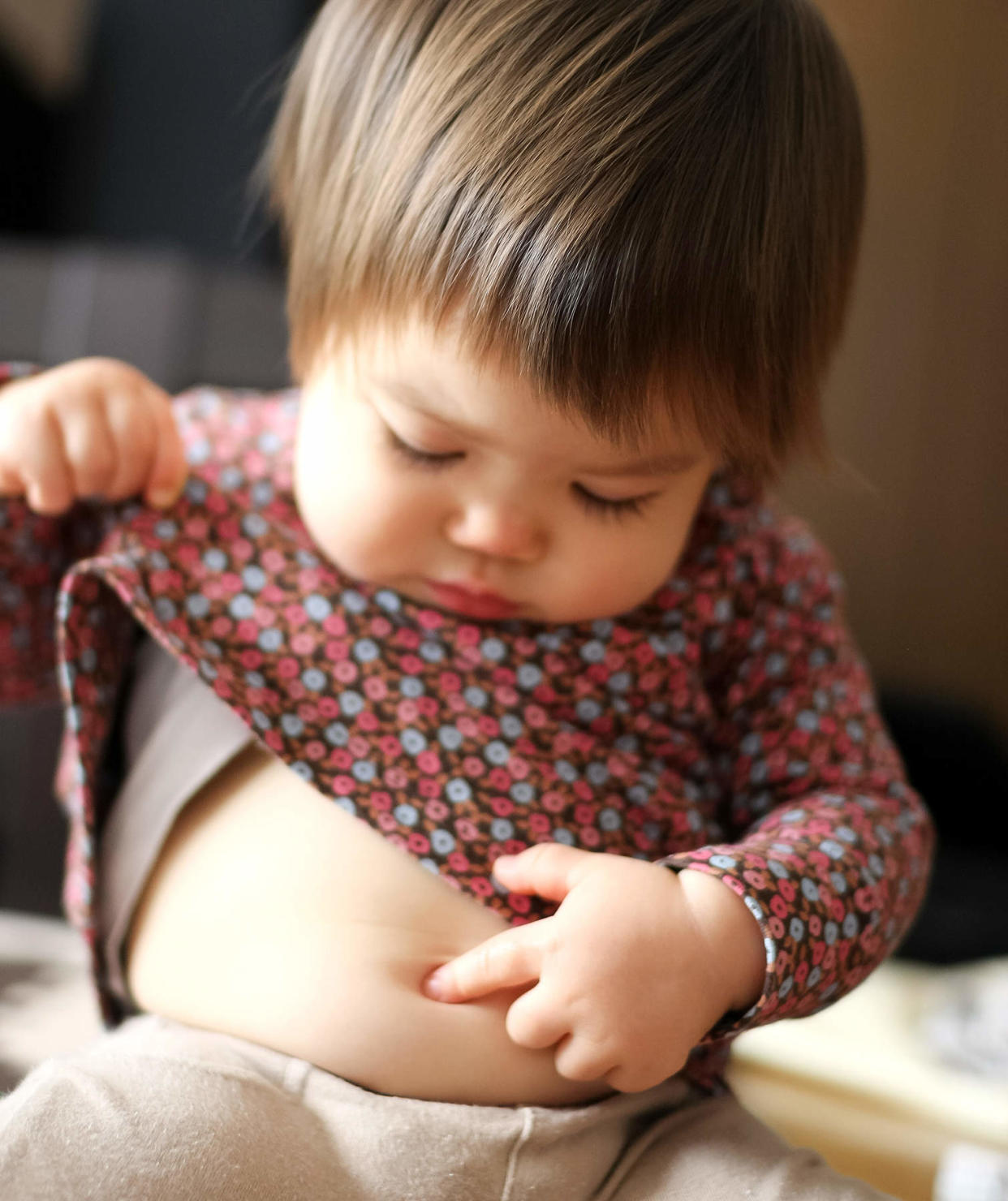Outie Belly Buttons: Everything You Need to Know

The belly button is a mysterious part of our bodies—and with a rise in midriff-baring fashion, navel tattoos, and belly button piercings, we can’t help but examine each other’s navels. While the vast majority of people have “innie” belly buttons (where it dips inward like a big dimple), there are those who have an “outie” belly button (ones that stick out like a little knot). The good news is that whichever one you have, it’s totally normal. But, there are so many extra questions: Why do some people have innies and why do others have outies? What are the differences between the two? Are there special ways of caring for either—and are there any signs that could signal a health problem? We asked the experts common questions about outie belly buttons (like why they occur)—and to dispel some myths about this body part. Here’s all you need to know about them.
What Causes Outie Belly Buttons—and Is There Cause for Concern?
One common hunch is that outies are a result of how a newborn’s umbilical cord is cut or clamped—that’s not true. Most often, outies do occur in newborns, and are first noticed after the umbilical cord stump drops off in one to three weeks. (During pregnancy, some women’s navels pop out temporarily.) With newborn outies, there’s usually no known cause and no need to worry.
“The skin just chooses to grow in an outward direction rather than inward,” says Jennifer Shu, MD, FAAP, an Atlanta pediatrician, co-author of Heading Home With Your Newborn: From Birth to Reality, and spokesperson for American Academy of Pediatrics. “It may or may not go away. Even if it doesn’t, it’s purely a cosmetic concern.”
Less often, outies result from one of two underlying medical conditions—an umbilical hernia or an umbilical granuloma—that rarely pose health concerns or require treatment.
An umbilical hernia—most common with premature babies—occurs when intestine, fat pushes up through a tiny hole in a newborn’s stomach muscles, causing a bulge in or near the navel. Typically, this is not dangerous or painful and the hole closes on its own without treatment within a few years.
An umbilical granuloma is a small swollen piece of skin that develops in the belly button soon after the umbilical cord falls off. If left untreated, it hardens and looks like a little ball of skin inside the navel.
What’s a Parent to Do?
Usually not much. If your newborn has an outie, there’s no need to rush to the pediatrician’s office. “Talk to your doctor at the next checkup,” says Shu. “It does not warrant a special visit.”
Pediatricians can readily spot an umbilical hernia in a newborn but usually adopt a wait-and-see attitude and monitor the situation. If your baby is diagnosed with an umbilical hernia, remember it is likely to heal spontaneously before your child is four or five years old.
In extremely rare instances, protruding intestine can get trapped in the hole, requiring immediate surgery. Beyond this, the few children that still have an intestinal hernia by age four or five years old sometimes undergo a simple surgical procedure to close the hole and, if necessary, to tuck any protruding material into the belly button.
When pediatricians including Shu spot an umbilical granuloma, they may cauterize it, which involves drying the skin with a chemical that causes it to soon shrink away. “It doesn’t hurt at all. It’s like painting a fingernail,” says Shu.
Can or Should an Outie be Fixed?
Parents in some cultures believe a baby’s outie will go away faster by taping a quarter over it or by wrapping a bandage around the belly but there is no evidence that this works, says Shu.
Cosmetic surgery can “fix” an outie but there’s rarely a health reason to have it. If an older child is bothered by his or her outie, parents may want to discuss this with their pediatrician.
But these days, most parents of newborns with outies “roll with it,” says Shu, especially since they can readily find reassuring medical information online. “I usually tell parents to leave it alone.”
Kids with outies still may be the target of teasing but even that risk may be diminished. “We are much more into body tolerance these days,” says Shu. “We’re all a little different and if your belly button sticks out that makes you ‘you’ and is part of your personality.”


